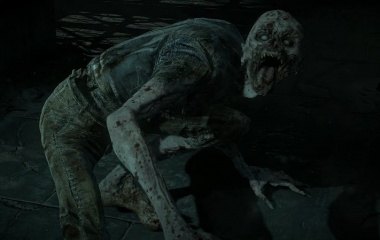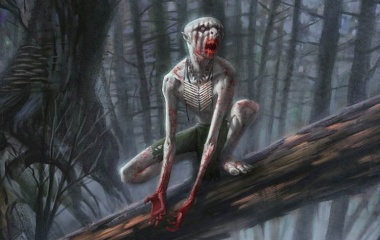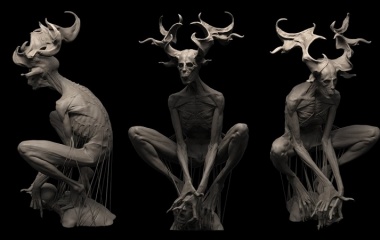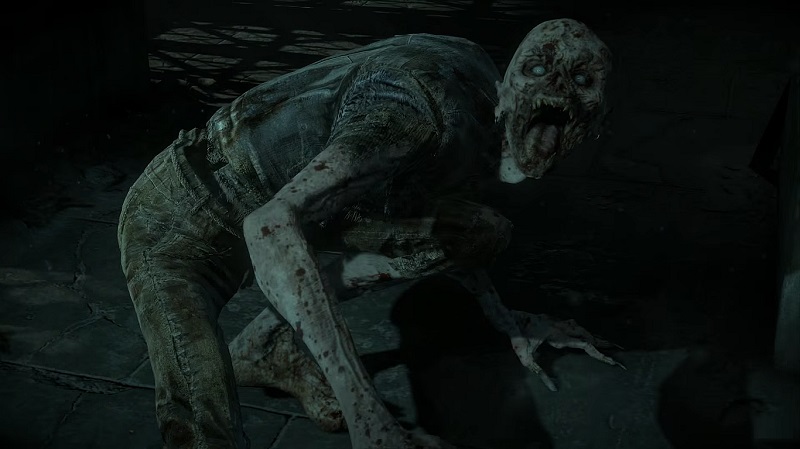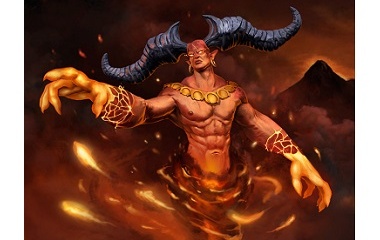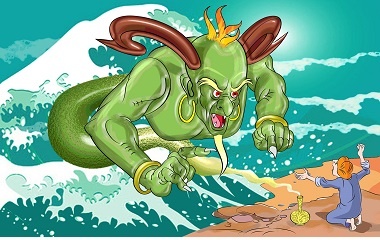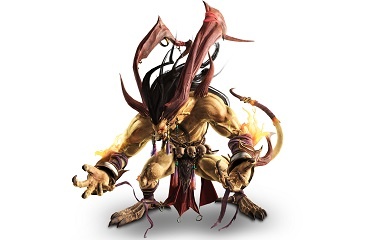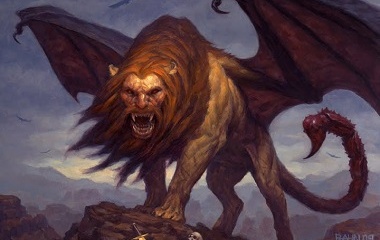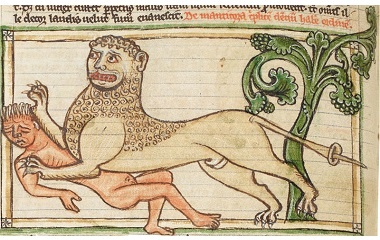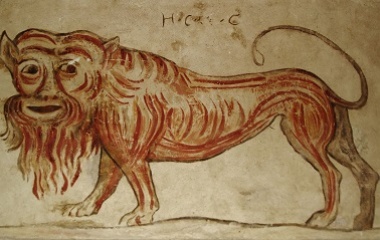In the late night hours you see a swirling cloud of mist even though the quiet night has no breeze. A chill suddenly surrounds you in the humid summer air. For an instant, you could have sworn you saw the figure of a person standing in the mist, but when you look closer they’ve disappeared. Have you just encountered a ghost?
What is a Ghost?
The idea of ghosts has been around for thousands of years and is thought to pre-date modern humans. This is often evidenced by the ancestor worship of many ancient and pre-literate cultures – many of whom believed their ancestors had the power to help them from beyond the grave.
Many anthropologists believe that the early idea of ghosts was developed when it was determined that humans must have a ‘spirit’ in addition to a physical body. Ancient cultures believed this spirit form – that supposedly makes us human – is confined to our physical body during life, but could sometimes be made visible through our breath. This was often evidenced as being fact because of the way warm breath interacts with cold air. In fact, the word ‘spirit comes from the Latin word ‘spiritus’ which meant ‘breath’ or ‘blast.’

The word ‘ghost’, however, has a very different origin. It comes from the word ‘ghoisdo-s’ and means ‘fury’ or ‘rage.’ This is very telling of the ancient perceptions of ghosts. While ‘ghost’ is commonly used interchangeably with the word ‘spirit’, it is much more likely to be used to describe a distressed or malevolent apparition.
What Creates a Ghost?
Ghosts are thought to be the result of many causes depending on geographic location and culture. However, the most common basis for all ghost related beliefs is that when the human body dies, the spirit continues to live. Cultures with religious or spiritual roots often believe that a ghost is created when a spirit is unable to find the necessary peace to move into the afterlife or when the spirit has been corrupted by evil nature.
How to Prevent a Spirit from Becoming a Ghost
There are many things that are done to ensure that this doesn’t happen. The most common practice that is observed worldwide is to give the dead burial rites to help them move peacefully onto the next world. This is partially done because it was thought that spirits who were not properly mourned would become angry and remain in this world to haunt the living.
Some ghosts will not rest until they have haunted – or even harmed – those who wronged them during their lifetime. There are many tales of ghosts who haunted their killers until they were caught or sufficiently punished. However, there are also tales of ghosts who will haunt people who they perceive to be evil or similar to people that they hated during their lifetime. These ghosts often become the basis for urban legends that are passed down from generation to generation. They tend to be the most violent types of ghosts, but there are supposedly ways to deal with them or ensure that they will not harm you.
Despite the fact that many ghosts are believed to have a malevolent nature, there are cultures that believe ghosts can be helpful or even friendly. These ghosts are often brought back from their peaceful resting place because they sense that someone they know or are related to is in imminent danger. There are some cases in which ghosts who perished because of a dangerous place or person come back to try to deliver a warning when they sense another person may fall victim to their fate.
There are also cultures that believe the dead come back to walk among the living during a certain part of the year. They welcome the spirits of the dead, whom they perceive to be benevolent, and offer them many gifts in the hopes that they will be rewarded by the spirits of their ancestors.
Physical Appearance
It is widely believed that ghosts are made up of a wispy substance that is similar to mist. Many anthropologists believe that this comes from the beliefs of ancient cultures. Ancient cultures believed that a person consisted of a physical body and a spiritual body. The spiritual body was confined to the physical body during life, but could sometimes be seen when a person breathed in cold areas.
The mist that is caused by a person’s breath in a cold climate is very similar to our ideas of what comprises a ghost today, making many believe that this is why we believe ghosts are airy.
Ectoplasm
Others turn to more scientific reasoning when trying to determine the makeup of a ghost. These people often point to ectoplasm as being the source of ghost appearances. Ectoplasm is thought to be a visceral substance similar to gelatin that is somehow manufactured by both ghosts and psychics.
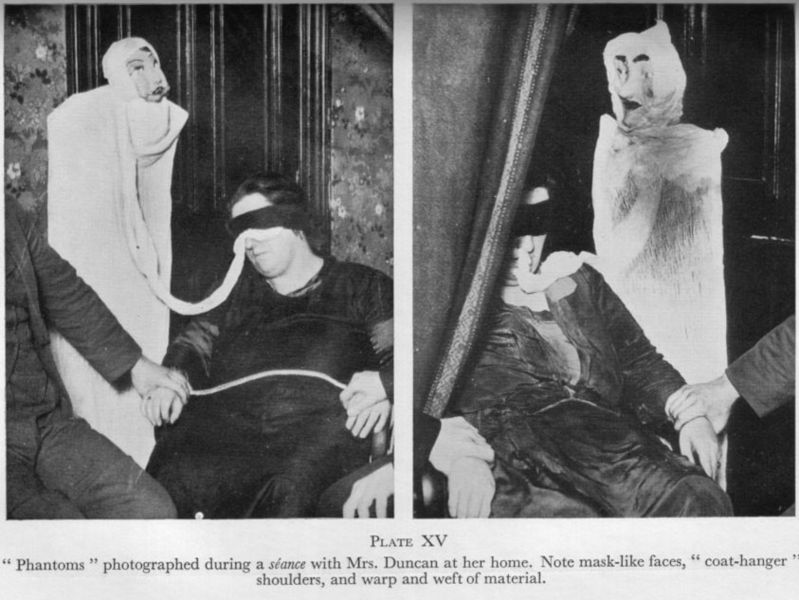
It is thought that ghosts appear to humans when they are able to obtain ectoplasm and drape it over their spirit form. This is thought to be the only substance that allows people to see a ghost in its true form. Psychics who speak of the existence of ectoplasm claim that ghosts are only seen at night because ectoplasm cannot properly form in well-lit locations. However, the substantial number of ghost sightings during the day as well as psychics caught trying to prove their powers through fraud have made this extremely unlikely.
When it comes to psychics who can supposedly create ectoplasm when in a trance state, there is little to no evidence to support their claims. Many scientists who observed psychics in their trance-state were able to detect elements of fraud in their séance. Those who thought that there could be traces of real ectoplasm were never able to prove the existence of such a substance conclusively. Regardless, there are many photographs and accounts of psychics who were able to create such a substance during their meditations that continue to be a source of proof for many believers today.
Outside of the substance that makes up ghosts, there aren’t many certainties. Many people who claim to have seen ghosts insist that they were either wispy and air-like or translucent. Others claim to have encounters with ghosts in such vivid detail that they are unaware of their interaction with an otherworldly spirit until the ghost suddenly disappears or they see the picture of the deceased person later on. There are also accounts of ghosts who appear as they were when they were living, while other accounts tell of ghosts who appear as they were when they died – gruesome wounds included.
Though it isn’t uncommon to hear of physical ghost sightings, it is much more likely to hear of people who encountered ghosts through hauntings. There are many telltale signs of ghost hauntings that feature a sudden cold chill in the air or the sound of chimes and bells that ring without a breeze being present. Other signs can include the sound of voices in an empty house or the sudden appearance of footsteps. The footsteps can appear in dusty areas that are prone to create impressions or can be created by the production of a substance seemingly out of thin air. One example of this can be seen in the case of a haunting where wet footprints appeared outside of a pool long after the water had been drained. Lastly, it is also common for ghosts to use familiar scents to announce their presence. People who experience this type of haunting report smells of perfumes or cigar smoke as being common scents. More extreme cases sometimes report a smoke trail in the air even though they are alone in the room and were not smoking at the time.
There are also cases of hauntings where ghosts are able to make a physical disturbance in their surroundings. These ghosts are known as poltergeists. Most cases of poltergeists are fairly tame and detail a ghost being able to turn lights on and off or knock over small objects. Other poltergeist cases are more severe and result in many damaged items as well as people being put into dangerous situations.
Reasons a Ghost May Be Unable to Move On
The personality of ghosts is largely thought to hold some clue to the reason they remain tethered to the Earth. The most common belief for why ghosts remain on Earth instead of moving on to an afterlife deals with the way in which the ghost died. Many believe that people who die violent or tragic deaths will sometimes come back to haunt those responsible or those who may put others in similar situations.
Other ghosts are more violent and seem to haunt the living based on a need for revenge. These ghosts are usually motivated by events that happened during their lifetime, though there are some cases of ghosts who look for revenge because of a tragic death.
While most ghosts are believed to be evil in nature, this isn’t the case for all ghosts. There are many recorded stories that detail a ghost coming back to deliver an important message to the living. This is sometimes done by a loved one or a distant ancestor who sense that one of their living relatives is about to face a perilous danger. There are also cases of ghosts who were killed because they ventured into a dangerous place or happened across evil people during their lifetime. These ghosts sometimes come back to the living that are about to be put into the same situation to try to warn them away from danger.
There are also cultures that believe the dead are allowed back into our world during a certain time of year. They come back to interact with the living and see their legacy. These cultures often offer their ancestors gifts during the visits in the hopes that their ancestors will grant them blessings and good fortune in return.
Types of Ghosts
Terminology: Spirits
Spirits are considered to be the energy associated with a physical body that make us human. While it is known that our physical bodies will die at some point in time, it is believed that our spirits will survive past the death of our physical bodies. Spirits are considered to be supernatural beings, though they are often limited by our physical bodies.
Residual Hauntings

Alleged haunted Great Amherst House
Residual hauntings (sometimes simply called residual haunts) fall into a unique category of the ghost spectrum. It is believed that residual haunts do not actually haunt the living – rather their energy is played on a loop of some sort that is reflective of the habits of the person who created the energy.
It is thought that this type of energy is created when a person engages in repetitive habits that are built into a memory bank of sorts. When that person passes on, their energy remains and becomes a presence of its own.
Residual haunts do not have apparitions and are not really considered to be spirits. They are simply energy that is left behind from a spirit that used to inhabit the space that is now haunted. Common residual haunts include the sound of voices and laughter, hearing footsteps, or hearing crying and screaming.
Intelligent Ghosts
It is not known why intelligent ghosts haunt the areas that they do – it is only known that they seem to be aware of their surroundings in our physical world. Many pseudoscientists who try to make contact with ghosts search for intelligent apparitions to communicate with.
The personality of these apparitions varies, but most are considered to be somewhere along the spectrum of friendly to mischievous. These types of ghosts are often categorized for their attempts to make contact with the living. To do this, they often try to speak, touch living people, or move small objects to show that they are present.
Poltergeists
Poltergeists are a type of intelligent ghost, but are put into their own category for their bothersome and sometimes destructive behavior. They interact through noise and disturbance (poltergeist literally translates to noisy ghost) and often try to get the attention of the living by making loud sounds.
Some poltergeists have visible apparitions, but this is not always the case. They often move, throw, bang, or open and close objects to get the attention of humans. Sometimes they will scream loudly. It is thought that the strength of a poltergeist may grow over time – often to the dismay of the people they haunt. Poltergeists are not friendly. Some may only be mischievous, while others are more aptly categorized as being aggressive. Sometimes their aggressiveness and negativity causes them to be confused with demonic ghosts.
Poltergeists tend to appear and disappear without rhyme or reason. Many hypothesize that this is because they feed on the energies and emotions of the people they haunt.
Demonic Ghosts
Demonic ghosts are not thought to be human in nature, though they behave in a similar manner to human apparitions. The difference is that demonic ghosts are known to be much more powerful and are thought to sometimes take control of living human beings.
Demonic apparitions are usually thought to be humanoid, though some appear to be animals with humanistic qualities. They have the ability to walk, fly, and disappear into thin air. In fact, it seems that demonic apparitions have the power to do whatever they desire.
These ghosts are dangerous and evil in nature. Their existence is often recorded by the Catholic Church, and it is thought that these ghosts make up the majority of spirits that need to be exorcised from human victims.
Crisis Ghosts
Crisis ghosts are ghosts that appear on behalf of those who are dying or have recently died (though a few cases have reported crisis ghosts who appear from a living person). It is common for these types of ghosts to appear within 12 hours of death, though they can make their presence known for up to 48 hours after their death.
Crisis ghosts appear only once and have a very specific purpose in mind – to deliver one last message to their living loved ones. Often, these ghosts appear to give farewell messages to loved ones they were unable to see in person before their deaths. There are also cases of crisis ghosts who reappear to someone they loved or were close to in order to give that person a message with useful information.
In rare cases, crisis ghosts can appear on behalf of those who are not yet dead. This is normally done to ask for help and it is hypothesized that this type of crisis ghost could be made possible through some form of astral projection.
Protective Ghosts
Protective ghosts are spirits that remain on Earth or come back from the next world to protect their living loved ones. These ghosts are most commonly documented in cases where the living relative or loved one is in danger. This can sometimes be to foretell of a dangerous situation that the loved one will face, though it is more common for these ghosts to appear if their loved one is in the general vicinity of a demon or other dangerous entity.
Malevolent Ghosts
Malevolent ghosts are spirit-beings that seek to inflict harm or pain onto the living. There are a range of reasons for why a malevolent ghost wishes to harm the living, but the most common is revenge. Sometimes these ghosts experience jealousy towards the living that they wish to take out on those in the general vicinity, other times the entity wishes for the living to feel and share its sadness.
There have also been documented cases of malevolent ghosts who haunt homeowners who have invaded their space. These hauntings stop as soon as they have moved away from the premises.
Ghosts of the Dead
Ghosts of the dead are known to appear after a person has recently passed. They are usually differentiated from crisis ghosts because they appear after 48 hours have passed or they appear more than once.
These ghosts usually visit those that they knew while they were living, though there are cases of ghosts of the dead who visit people they had no connection to while living.
These ghosts are known to haunt places or people that they were deeply connected to while they were living. These cases are rare, but have been documented nonetheless.
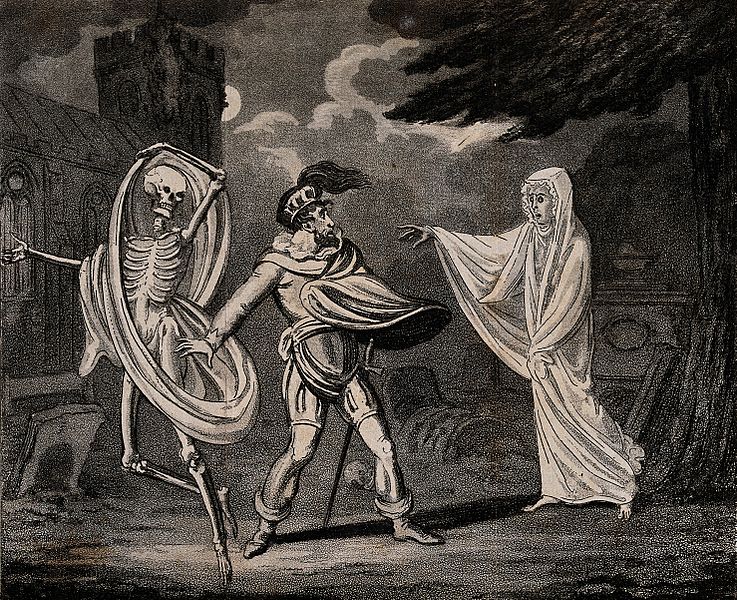
Holidays That Celebrate Ghosts
Hallows Eve
Hallows Eve (more commonly known as Halloween) isn’t just a candy-fest that happens every October. Originally, Hallows Eve marked the end of the summer (which was called Samhain at the time) and the beginning of the dark half of the year.
It was thought that the barrier between our world and the world of spirits became weak, allowing the spirit realm to inhabit the land of the living and wreck havoc. It was thought that these spirits were capable of all kinds of destruction, though one of the most feared methods of destruction was the destroying of crops. To try to appease these spirits, bonfires would be built in order to sacrifice crops and animals.
People would also pray for the souls of the deceased – especially those who had passed recently. This was done in the hopes that those who had not yet reached heaven would be able to do so during this time.
Poor families would knock on the doors of the rich who had recently lost a relative during these festivals. The rich would give them a pastry called a soul cake in exchange for a prayer on behalf of their dead relative. The practice was called ‘souling.’
Souling eventually evolved to include more than just the offering of a pastry until it became a practice known and appreciated by millions of children worldwide: ‘trick or treating.’
All Souls Day
All Souls Day is celebrated on November 2nd and is observed out of respect for all Christians who have died. It is believed by the Roman Catholic Church that a soul which is not perfectly clean from Earthly sins and transgressions upon leaving the body after death will not be able to enter Heaven. Instead, it will be sent to Purgatory.
It is thought that prayers and sacrifices on behalf of the souls trapped in Purgatory can help to free them from this space and allow them to enter Heaven. Christians pray for their loved ones on All Souls Day in the hopes of helping them into Heaven if they have not already made it there themselves.
Obon
Obon is a traditional Buddhist festival celebrated in Japan. It is based on the belief that the spirits of the dead are able to come back to the land of the living and visit their relatives during the middle of the seventh lunar month. Most of these festivals are held from August 13th to August 16th.
Many people who celebrate Obon travel to their hometowns to ensure that they are able to welcome the spirits of all their ancestors. They welcome the spirits of the dead with a ritualistic dance and honor their ancestors with floating lanterns.
At the end of Oban, bonfires are built outside of the city. It is thought that the light from these fires helps to guide the spirits back to their world.
El Dia De Los Muertos
El Dia De Los Muertos marks the day that the dead are able to return to Earth and celebrate among the living. El Dia De Los Muertos takes place during a similar timeframe as Hallows Eve and All Souls Day (November 1st and 2nd).
During the beginning of November, it is thought in Mexico that the dead are able to return to the living world to visit their loved ones. Their surviving relatives throw large parades and celebrations in their honor and it is thought that the dead are able to enjoy the festivities with them.
It is tradition to clean the graves of deceased loved ones and adorn the plot with pictures, candles, and favorite foods and drinks of the one who is passed. The candle is thought to help guide them to and from the world of the living, while the food and drink are meant for enjoyment.
Hungry Ghost Festival
Hungry Ghost Festival is celebrated in China and is believed to be the day when ghosts are able to return to interact with the living. During this time, food is left on alters to appease hungry spirits that may be haunting the streets during the festivals.
It is also tradition for paper sacrifices to be made on behalf of the dead. These paper sacrifices often include things like fake money, cars, and other precious items. It is thought that when these things were burned, they would provide for their ancestors in the afterlife.
It is also common for people to stay indoors during the nighttime hours. Many believe that going outside at night during the Hungry Ghost Festival could cause a ghost to haunt their family.
Pchum Ben
Pchum Ben is celebrated in Cambodia and is considered to be the time that ghosts are able to come back to the living world in order to atone for sins in their past lives. These spirits are considered to be hungry and it is common for people to leave food and drink offerings to help ease the burden of the otherworldly suffering of these ghosts.
The festival lasts for 15 days, during which time everyone wears white – the official color of mourning in Cambodia.
Famous Ghosts
The Flying Dutchman

The Flying Dutchman is supposedly a 17th century merchant ship that is cursed to haunt the seas because of the foolish actions of its Captain. During a terrible storm, the crew members and passengers aboard the ship begged the Captain to try to find refuge on the shore. The Captain refused and decided to challenged God himself to sink the ship. No one on the ship was ever seen alive again, though the ghost ship has been sighted numerous times since it’s final voyage. Anyone who sees the ship on high seas is said to be cursed with bad luck.
Bloody Mary
Bloody Mary is the ghost of a woman who killed all of her children for no apparent reason. Her ghost can be summoned by standing in front of a mirror in a dark room and saying her name three times.
Ann Boleyn
The ghost of Ann Boleyn is one of the most famous ghosts in history – especially in Great Britain. Ann Boleyn had the misfortune on being one of Henry VIII’s many wives. When he became dissatisfied with her, he demanded that she be executed by beheading in the Tower of London.
Since her execution, Ann’s ghost has been seen haunting the Tower of London many times. In one instance, she appeared to a guard who demanded that she stop only to be faced by her apparition. He was shocked to find that the figure (who he thought was an intruder) had no head. He shoved his bayonet at the figure and was shocked with an electrical pulse that rendered him unconscious.
Originally, it was believed that the guard created the story to escape court martial for falling asleep on his watch. Later on, however, when he was put on trial, the guard was found not guilty when several witnesses corroborated his story.
Explanation of the Myth
The most popular explanation for ghosts is that they are fiction created to comfort the living. Because many religions and cultures believe in an afterlife, it follows that there is an essence or spirit inside living humans that will continue after death.
Stories of ghosts may have originated as comfort for the living that their loved ones were at peace or as a warning to stay away from certain places or behaviors.
The existence or inexistence of ghosts may be impossible to prove, but their place in folklore across the world cannot be denied.
Ghost


